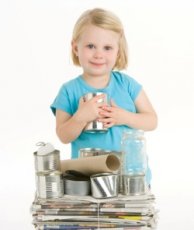Waste Management For Children
 Environmentally sound behaviour is very often consistent with the principles of rationality, servitude, prudential treatment of purchases, by their time, to environmental management. And all children can, of course, be taught by adults, parents and caregivers.
Environmentally sound behaviour is very often consistent with the principles of rationality, servitude, prudential treatment of purchases, by their time, to environmental management. And all children can, of course, be taught by adults, parents and caregivers.
In European gardens, children are taught such rules of conduct:
A summary of environmental programmes for pre-school institutions can be found in the following sections.
Related posts:
 Vozim-Gruzim is ready to assist you in addressing this issue not only in the capital of the Republic by providing quality services for the export of solid household…
Vozim-Gruzim is ready to assist you in addressing this issue not only in the capital of the Republic by providing quality services for the export of solid household… I ve done a lot of franchise monitors, but I ve got the usual bids, a cafe or a store that s already starting to compete with me, I thought I was bored, telling…
I ve done a lot of franchise monitors, but I ve got the usual bids, a cafe or a store that s already starting to compete with me, I thought I was bored, telling… Between 80 per cent and 85 per cent of the debris is exported for burial to special polygons. Every year, the number of solid domestic waste in Russia is increasing…
Between 80 per cent and 85 per cent of the debris is exported for burial to special polygons. Every year, the number of solid domestic waste in Russia is increasing… Is discipline important in investing? Without any doubt it is true! A disciplined investor will never buy securities without serious analysis or pay attention to…
Is discipline important in investing? Without any doubt it is true! A disciplined investor will never buy securities without serious analysis or pay attention to… Structural debris: brick, brisket, concrete, stoves obtained during the dismantling of construction sites are transformed into a secondary building block on GOST…
Structural debris: brick, brisket, concrete, stoves obtained during the dismantling of construction sites are transformed into a secondary building block on GOST… Professional presentation demands more than just content - it requires the right display platform. The Black Easel stands out as a sophisticated solution for artists…
Professional presentation demands more than just content - it requires the right display platform. The Black Easel stands out as a sophisticated solution for artists… The Investor will deposit 200 million roubles in the Siberian garbage processing plant, the Head of the region said that quality recycling of debris should be required…
The Investor will deposit 200 million roubles in the Siberian garbage processing plant, the Head of the region said that quality recycling of debris should be required… The Territorial Waste Management Scheme was held by the Parliamentary Hearings at Medoldum Parliamentary hearings of the Regional Waste Management Scheme were held…
The Territorial Waste Management Scheme was held by the Parliamentary Hearings at Medoldum Parliamentary hearings of the Regional Waste Management Scheme were held… Environmentally sound behaviour is very often consistent with the principles of rationality, servitude, prudential treatment of purchases, by their time, to environmental…
Environmentally sound behaviour is very often consistent with the principles of rationality, servitude, prudential treatment of purchases, by their time, to environmental… Alabushio village Alabushevo has an ancient and interesting history. This city has since its foundation been the centre of the textile industry. Barvija, the modern…
Alabushio village Alabushevo has an ancient and interesting history. This city has since its foundation been the centre of the textile industry. Barvija, the modern…